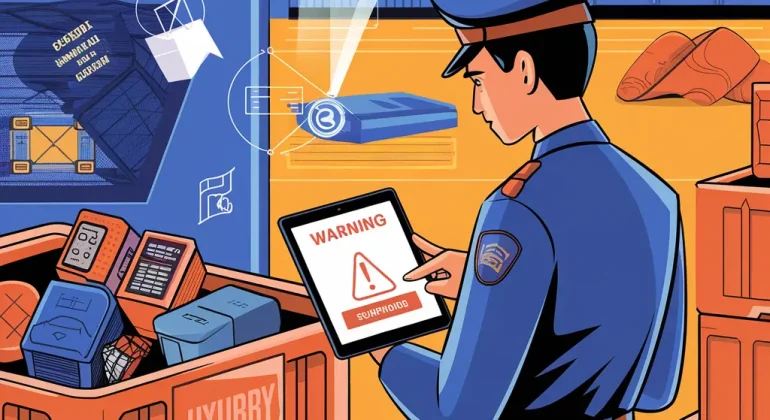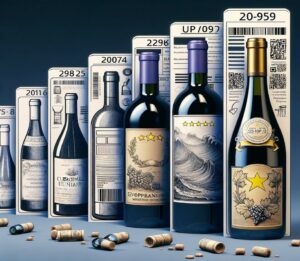Customs Surveillance in Intellectual Property Matters
In today’s globalized economy, the protection of intellectual property rights is essential for businesses seeking to safeguard their trademarks, innovations, and creative works. With the increasing flow of goods across borders, infringed products and infringements on trademarks, patents, and copyrights pose significant risks to legitimate rights holders. Customs authorities play a critical role in enforcing intellectual property rights by identifying and detaining suspected counterfeit goods before they enter the market.
This article explores the mechanisms of customs surveillance, detailing how customs detention operates, the legal frameworks supporting intellectual property protection, and the procedures for filing an Application for Action (AFA) with customs services. Understanding these processes allows businesses to enhance their anti-counterfeiting strategies and protect their intellectual assets effectively.
I – Understanding customs detention
What is Customs Detention? Customs detention is the process by which customs authorities intercept and hold goods suspected of infringing intellectual property rights at a country’s border. This process prevents counterfeit goods from being imported, exported, or transshipped, reducing financial and reputational damage to rights holders and ensuring consumer safety.
Customs officials may detain goods ex officio (on their own initiative) or at the request of a rights holder who has filed an Application for Action (AFA). Once detained, the rights holder is notified and given the opportunity to examine the goods and provide evidence of infringement.
Legal basis for customs detention
In the European Union, customs detention is governed by Regulation (EU) No 608/2013, which outlines procedures customs authorities must follow when seizing counterfeit or pirated goods.
Key provisions include:
- Customs officials may intervene when they suspect an infringement of intellectual property right as trademark, patent, copyright, topographies of semiconductor products, utility models, supplementary protection certificates for medicines and plant protection products, new plant varieties, designations of origin, geographical indications and geographical denominations and design rights.
- Goods can be detained for up to 10 working days (extendable by another 10 days in some cases) while rights holders assess the infringement.
- If the rights holder confirms the goods are counterfeit, legal action can be pursued, including destruction of the goods.
Beyond the EU, similar regulations exist in many jurisdictions, such as the U.S. Customs and Border Protection (CBP) enforcement mechanisms under the Trade Facilitation and Trade Enforcement Act (TFTEA).
II – Protection of intellectual property rights by customs authorities
Legal framework
The enforcement of intellectual property rights at borders is an international effort supported by several legal instruments, including:
- TRIPS Agreement (1994): Establishes minimum standards for IP enforcement, including border control measures.
- Regulation (EU) No 608/2013: Defines customs enforcement procedures within the European Union.
- World Customs Organization (WCO) framework: Provides best practices for detecting and seizing counterfeit goods worldwide.
Scope of protection
Customs authorities have the power to act against various types of IP infringements, such as:
- Trademark infringements : unauthorized use of registered trademarks on counterfeit products (ex : Fake luxury handbags bearing a registered brand’s logo).
- Patent infringements : importation of products infringing on a granted patent (ex : Unauthorized production of pharmaceutical drugs protected by a patent).
- Design infringements : copying of registered industrial designs without authorization (ex : Knockoff furniture replicating a well-known designer’s work).
III – Filing an application for action with customs services
Eligibility and requirements
Rights holders, including individuals, companies, and trade associations, can file an Application for Action (AFA) requesting customs authorities to monitor and intercept infringing goods.
An AFA must include:
- Proof of Ownership: Trademark or patent certificates.
- Technical Specifications: Unique features of the authentic goods.
- Known Infringements: Reports of prior counterfeit activity.
- Contact Details: Representatives must be available to assist customs.
Procedure for Submission
- Obtain an EORI number: Required for all customs transactions.
- Complete the AFA form: Available through national customs portals. In France, all the information you need is available on the Customs and Excise portal.
- Submit electronically: Via the IP Enforcement Portal (IPEP).
- Approval & implementation: Customs reviews the application, and if accepted, begins monitoring for infringements.
Duration and renewal
- An AFA is valid for one year and must be renewed annually.
- Renewal requires updated information on counterfeit risks and authorized suppliers.
IV – Best Practices for Enhancing Customs monitoring
To maximize customs intervention effectiveness, rights holders should:
- Conduct regular IP audits: Ensure all trademarks and patents are up to date.
- Train customs officials: Provide guides and images to help identify counterfeits.
- Monitor supply chains: Collaborate with customs to track high-risk shipments.
- Use technology: Employ blockchain and AI-based tracking for better enforcement.
Conclusion
Customs monitoring is a vital tool for protecting intellectual property rights from counterfeiting and piracy. By proactively filing an AFA, businesses can leverage customs enforcement to block the import and export of infringing goods, safeguarding their brands and innovations.
At Dreyfus Law Firm, our team of intellectual property experts is dedicated to guiding businesses through the customs enforcement process. We provide tailored support for filing AFAs, monitoring customs interventions, and enforcing rights against counterfeiters. Our global network of IP attorneys ensures comprehensive protection in multiple jurisdictions.
Dreyfus Law Firm collaborates with a global network of IP attorneys specializing in Intellectual Property.
Join us on social media !
1 – What are the three main missions of customs?
Customs have three primary missions: • A fiscal mission: Customs collect and monitor duties, import VAT, and excise taxes, contributing to the national and European Union budget. • An economic mission: Customs facilitate and secure trade by enforcing import and export regulations while ensuring fair competition and economic competitiveness. • A protection mission: Customs combat fraud, protect consumers, and ensure national security by inspecting dangerous, prohibited, or counterfeit goods.
2 – How can intellectual property rights be protected?
The protection of intellectual property (IP) rights involves several key steps: • Registering rights: Filing a trademark, patent, or design with the appropriate offices (INPI, EUIPO, WIPO) grants exclusive rights to the owner. • Market monitoring: Implementing surveillance strategies to detect counterfeits both online and offline. • Customs enforcement: Filing an application for action with customs authorities allows them to seize suspected counterfeit goods. • Legal actions: In case of infringement, right holders can initiate legal proceedings, including seizure of counterfeit goods and civil or criminal lawsuits.
3 – What tools are available to protect intellectual property?
Several tools help reinforce IP protection: • Customs Application for Action (AFA – Action in Favor of Right Holders): This procedure enables IP owners to notify customs about suspicious goods and facilitate counterfeit seizures. • Online monitoring platforms: Various tools help identify counterfeit products sold on marketplaces and social media. • Training and awareness programs: Right holders can collaborate with customs to train officers in detecting counterfeit goods. • Cooperation with authorities: Agreements between IP owners, customs, and law enforcement enhance the fight against counterfeiting.
4 – What is the role of customs in the fight against infringement?
Customs play a crucial role in combating counterfeiting by enforcing border controls and intercepting illicit goods: • Goods inspections: Customs officers check imports and exports to identify suspicious products. • Seizures of counterfeit goods: When counterfeits are detected, customs can seize and destroy the illicit merchandise. • Collaboration with rights holders: Businesses and trademark owners can report counterfeit products to customs through the application for action process. • Awareness campaigns: Customs regularly conduct information campaigns to educate consumers and businesses about the risks of counterfeit products. Customs are a key player in intellectual property protection, working alongside businesses and authorities to secure markets and combat fraud.




